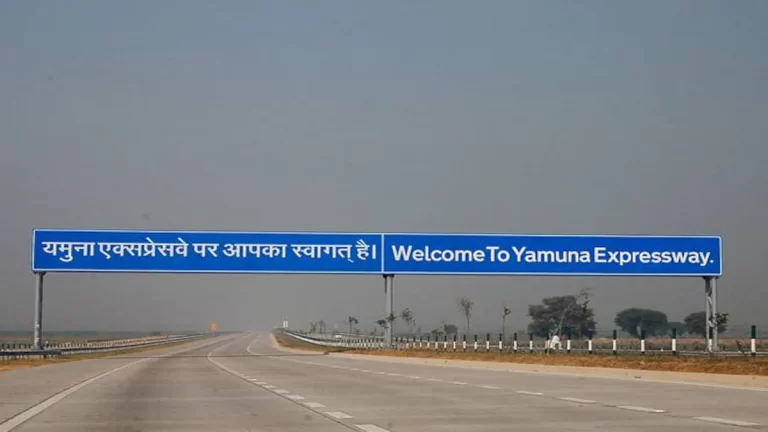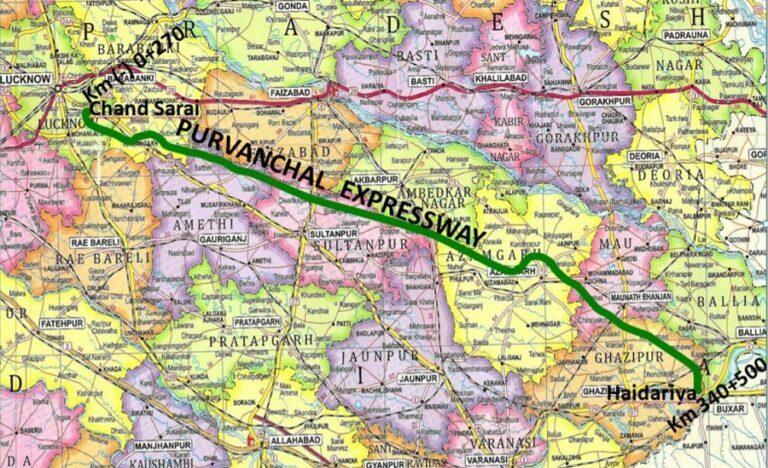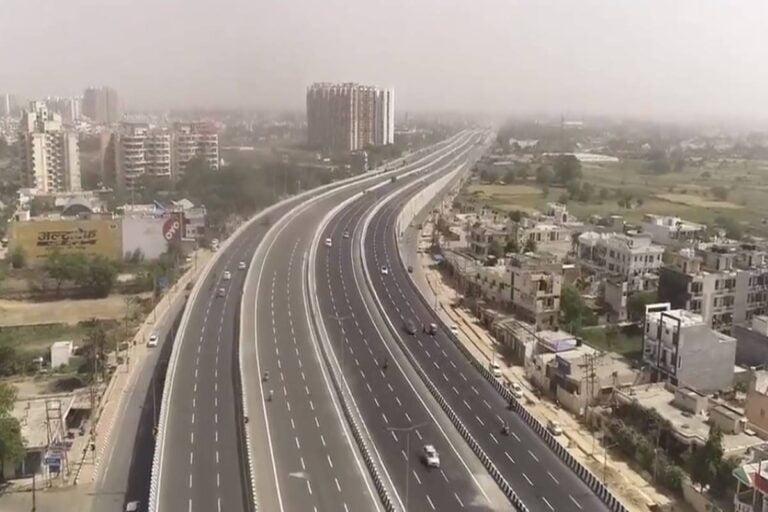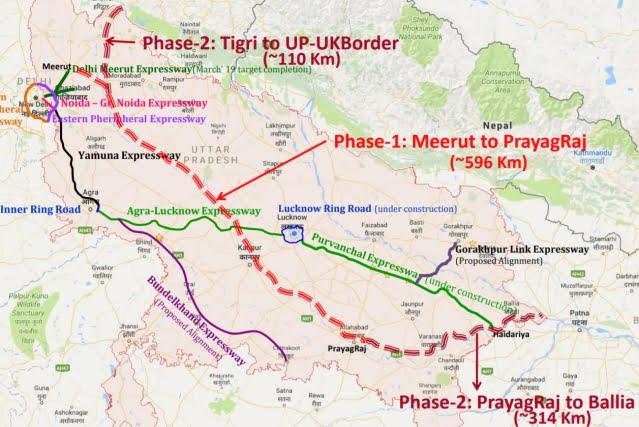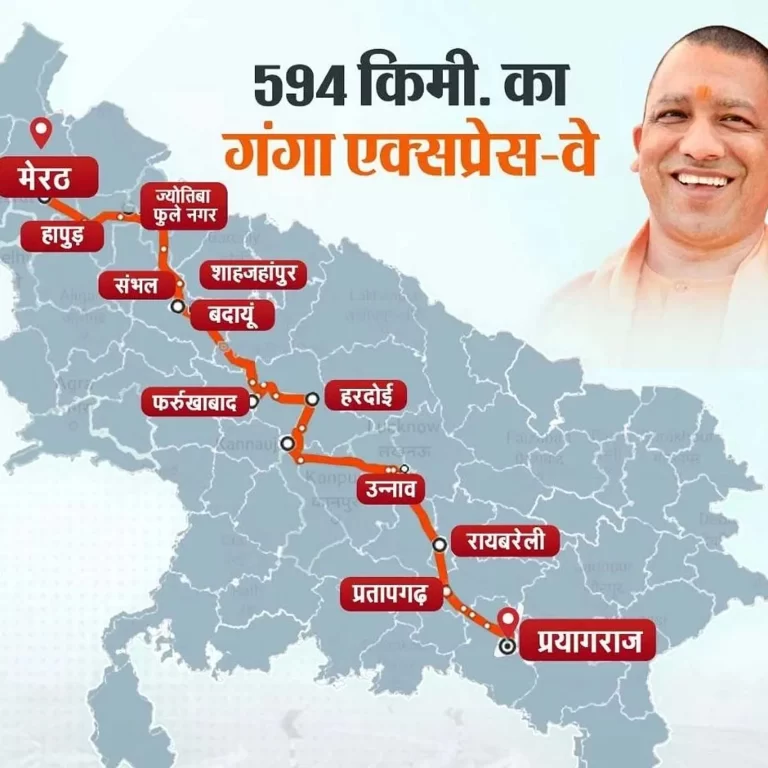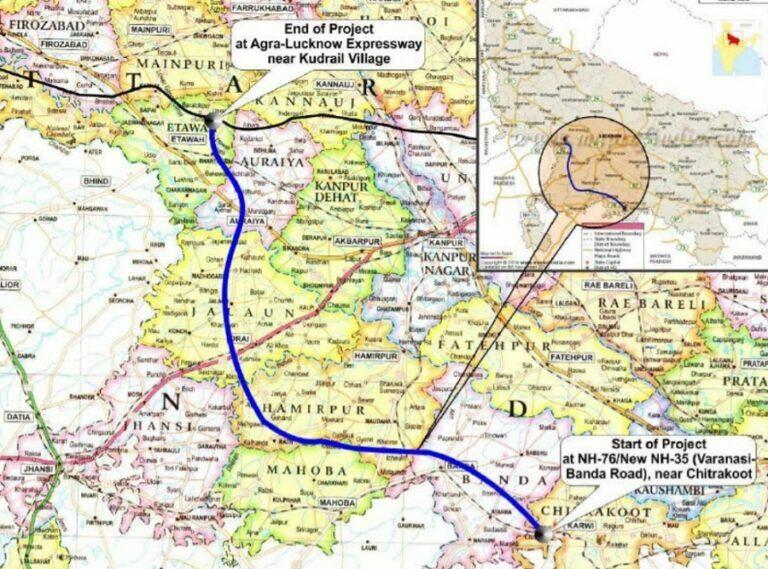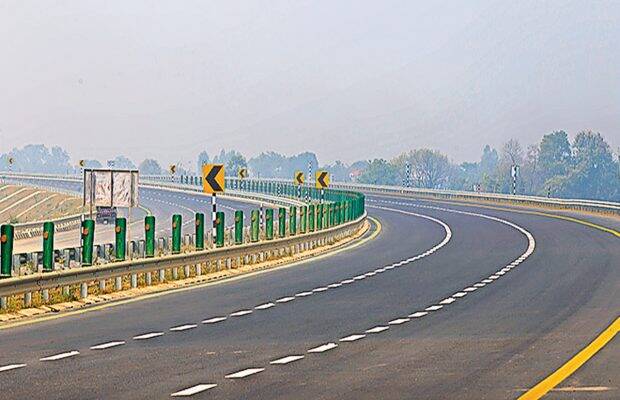

The upcoming 594-km-long Ganga Expressway, as grand in its conception as the river along which it will be developed, is finally off the drawing board, having received an environmental clearance from the state-level environment assessment authority recently. Work on the Rs 36,000-crore greenfield expressway, which would connect Meerut in the western part of Uttar Pradesh to Prayagraj in the east, is all set to begin by the end of December, with Prime Minister Narendra Modi laying the foundation stone for the project.
The tender process for executing the project on Design, Build, Finance, Operate and Transfer (DBFOT) basis under the public-private partnership (PPP) mode is in its final stages and the project is likely to be awarded in the coming days. Adani Enterprises, Ashoka Buildcon and IRB Infrastructure Developers are the three companies that have bid for the six-lane, access-controlled expressway project.
Almost 94% of the land needed for the purpose has already been acquired by the Uttar Pradesh Expressways Industrial Development Authority (UPEIDA), the nodal agency for the project, which aims to complete it by 2025. In order to expedite work, the project has been divided into four sections, with each section comprising three packages.
Traversing through 12 districts – Meerut, Hapur, Bulandhshar, Amroha, Sambhal, Badaun, Shahjahanpur, Hardoi, Unnao, Rae Bareilly, Pratapgarh and Prayagraj – the expressway would cover 140 water bodies and have seven road overbridges, 17 interchange roads, 14 big bridges, 126 minor bridges, 28 flyovers, 50 vehicle underpasses, and 946 culverts. On becoming operational, it is expected to reduce travel time between Delhi and Prayagraj from the current 10-11 hours to just 6-7 hours. The state government has plans to extend the expressway at both ends – by 110 km from Meerut to Tigri on the Uttar Pradesh/Uttarakhand border and by 314 km from Prayagraj to Ballia, in the second phase of the project.
In order to get the project rolling, UPEIDA has secured a loan of Rs 4,480 crore from Punjab National Bank for the purchase of land. This has been done by securitising the toll revenues of the already operational Agra-Lucknow Expressway. “The loan amount has been made available in lieu of the securitisation of toll revenues from the Agra-Lucknow Expressway. This is the first project in UP where we have moved towards monetisation,” says an official of UPEIDA, adding that by doing so, the government would be creating additional revenue for the Ganga Expressway project.
Says Rajeshwar Burla, vice-president, corporate ratings at ICRA, “the expressway will change the landscape of the eastern part of UP once it becomes operational.” It is expected to act as an industrial corridor and connect far-flung production units and agricultural production centres to the state and national capital. By reducing the travel time from Meerut to Prayagraj, it would provide a huge impetus to the perishable agri products industry. It would also act as a catalyst for establishment of new industrial units, food processing units, dairy industry as well as small and medium units in the region.
Movement on the Ganga Expressway project has come within weeks of the 341-km-long Purvanchal Expressway, which connects state capital Lucknow to Ghazipur on the UP-Bihar border, being made operational. Two other expressways, the Yamuna Expressway, connecting Greater Noida to Agra, and the Agra-Lucknow Expressway are already operational in the state.

